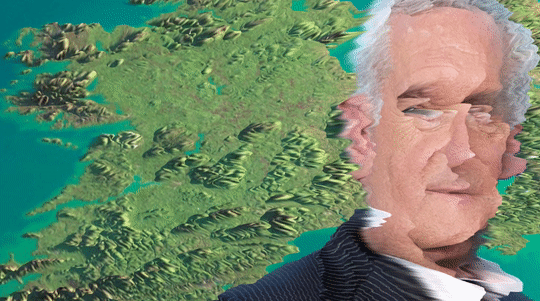Matter is messy and entangled, like social relationships, like legal agreements. It exists on a continuous plane, vibrant with connections. People fear or are excited by the total networking of the physical world that the Internet of Things promises. But matter has always been already networked – our bloody, fleshy, gaseous bodies are networked with the atmosphere, with the plants around us, with the bacteria in our guts and on our skin, with the viruses that have been essential to our evolution, with the sound waves that set the fluid in our ears rippling.
There’s a sadness to a disused public telephone in the GPO, to an obsolete Eircom phone card, that’s more than nostalgia. As we lose these objects we can touch and walk around and place our bodies in relation to, we lose a sense of control. It’s the difference between ringing your phone provider and speaking to a person, and ringing your phone provider and listening to a robot. Speaking to a person feels like access; speaking to a robot feels like enclosure, the closing out of sympathetic lines of communication.
Radio waves (including the waves that transmit Wifi) are all around us and pass through us – with a homemade antenna made from piano wire and a tin, you can tune into aural glitches in the ether that sound like the universe talking. These glitches have no human purpose, but they’re of the same material as the more orderly, official highways of telecommunications. Whether visible (Eircom phone cards) or invisible (radio/Wifi waves), matter is matter; what matters is how we manipulate it, or grant or withhold access to it, or value it. If the digital world seems enclosed, it’s not because of its materiality. Who keeps the ledger of costs and benefits? Who decides what counts as a valuable piece of history, and what should be paved over with a petrol station forecourt?
There are tendrils of hope in independent mobile phone repair shops, like plants growing through cracks in the pavement. Just as homemade antennae allowed people to interact with the materiality of radio waves, early digital publishing technologies like Geocities and gifs offered users a way in to the digital ether, a way to create and communicate that was not monetised. These technologies have been used to create some of the artworks hidden throughout this project.
This website, designed by BrassNeck Press, is itself a network, a tissue of connections between the work of artists exploring pre-millenium networks as potential sites of technological emancipation. But there are no official highways through it – just a voyage of discovery.
 Welcome, we advise on exploring no_matter_here on a desktop device
Welcome, we advise on exploring no_matter_here on a desktop device 















.gif)

